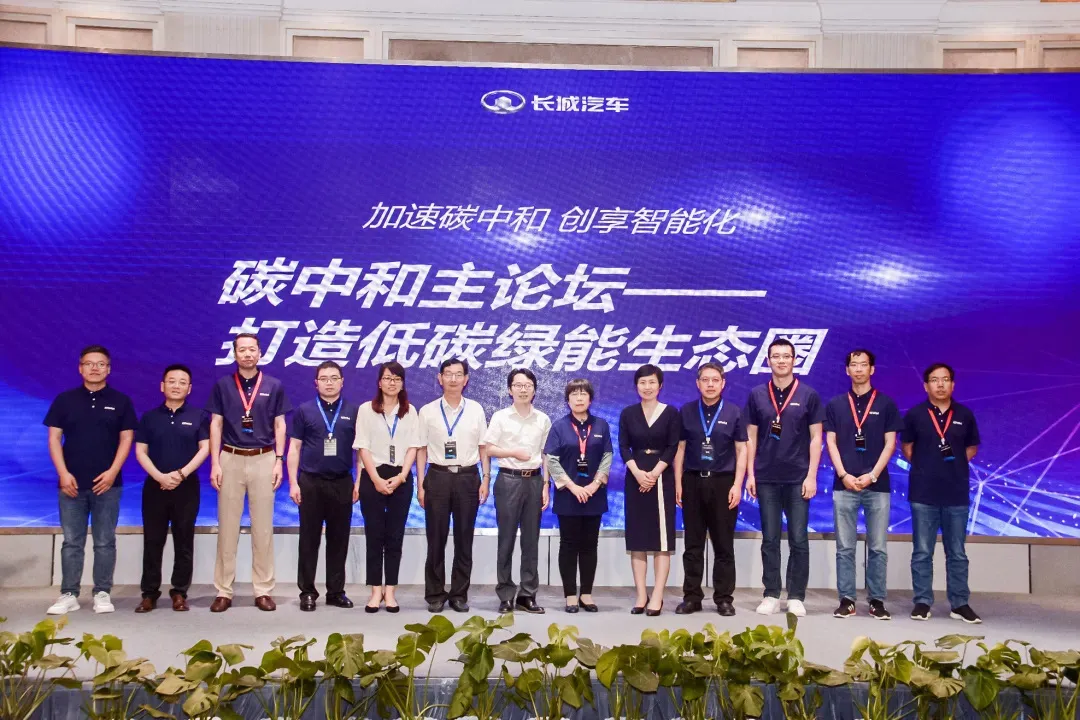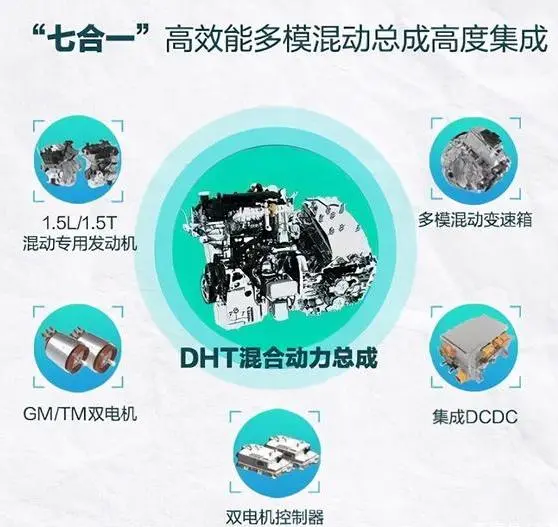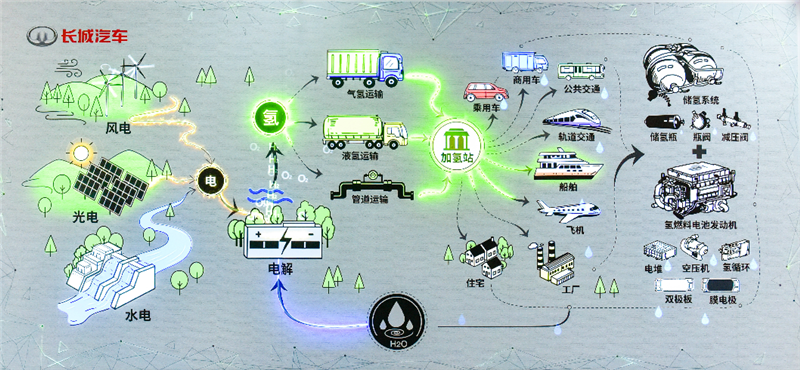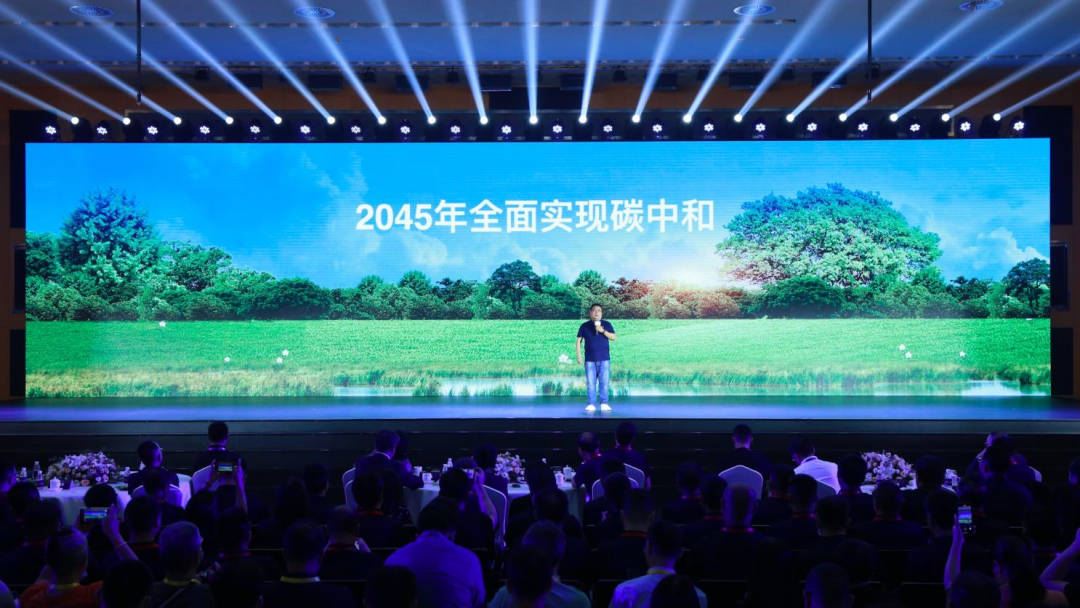Author: Michelin
The term “carbon neutrality” may still be an abstract concept for us, but for companies, the urgent need for transformation has already begun.
As a leader in the energy industry, one of the “two barrels of oil,” Sinopec has already begun transforming into clean energy and is planning to establish hydrogen refueling stations. Sinopec even predicts that the supply of gasoline, diesel, and other petroleum products will be zero by 2060.
If gas stations no longer provide gasoline, what will happen to our cars?
Don’t worry, the car companies are more anxious than the customers.
What will carbon neutrality bring to the automotive industry?
How anxious are car companies? You can tell from the time they announced the cessation of production of fuel-powered vehicles: Volkswagen announced that they will stop production of traditional fuel-powered vehicles in Europe by as late as 2035; Audi plans to switch all new models to pure electric products by 2026…
This urgent transformation is because carbon neutrality has too much impact on the automobile industry.
First of all, the industry structure changes, with pure electric vehicles gradually replacing fuel-powered vehicles. If in the past two years, new energy vehicles were in the popularization stage, then with the increase in penetration rate, it is now time for new energy vehicles to compete with fuel-powered vehicles head-on. This trend forces automobile companies to proactively or passively switch to the electric vehicle track and layout.
From horse-drawn carriages to steam locomotives, it was technological breakthroughs that drove industrial revolution. In the energy revolution, demand for clean energy is driving technology forward, and in order to replace fuel-powered vehicles and occupy a place in clean energy vehicles in the future, car companies have to promote the development of new energy vehicle technology, including longer driving ranges, safer batteries, and better electric drive systems… This not only enhances the product competitiveness of electric vehicles, but also makes the competition among car companies in electric vehicles more fierce.
Secondly, assessment of carbon dioxide emissions throughout the entire life cycle of automobiles. Throughout the life cycle, from raw materials, production, transportation, driving, recycling and reuse…when the assessment period is placed on the entire life cycle, whether or not to use fuel is not the only indicator of evaluating the environmental friendliness of automobiles. The selection of raw materials for new energy vehicles, the use of what kind of technology, whether or not the production factory reduces carbon emissions, all require the vehicle to consider using new technologies during production.
Take the recent hot topic of all-aluminum casting for car bodies. The integration of aluminum die casting introduced by Tesla reduced the number of process steps, lowered costs, and made the vehicle body lighter. However, the carbon emissions of an all-aluminum body are 16% higher than those of a fully steel or steel-aluminum hybrid body. Therefore, under the consideration of carbon neutrality, the all-aluminum body with so many advantages is not the best option. This is just the tip of the iceberg. More and more technologies stimulated by carbon neutrality will surface, and these technologies will become the green barriers for carbon neutrality pioneers.Finally, with carbon neutrality becoming a quantifiable indicator, the carbon index of every carmaker and every car can be easily assessed and even traded. Just as the introduction of “National VI” caused a batch of vehicles to become unable to be driven, will there be a similar “Carbon VI” to constrain new energy vehicles after carbon index standardization? After the global spread of carbon indexes, whether a new energy vehicle is green or not will become an assessment indicator for its overseas deployment plan, affecting the plan of electric vehicles going global.
Why is Great Wall Motors confident in achieving carbon neutrality by 2045?
More and more carmakers are making specific promises to achieve carbon neutrality: BMW has promised to reduce carbon emissions by 20% in the supply chain by 2030; Ford will reduce its carbon emissions by 76% by 2035… Among these commitments, there is also a voice from Chinese brands: Great Wall Motors has promised to achieve carbon neutrality by 2045, and increase the proportion of new energy vehicle models to 80% by 2025. Of course, this goal cannot be achieved by just shouting slogans. What is needed behind it is a lot of work and technological reserves. Let’s take a look at why Great Wall Motors has the courage to complete the carbon neutrality goal ahead of schedule.

Diversification of New Energy Product Lines
When it comes to carbon reduction in automobiles, the first thing that comes to mind is fuel. Developing new energy vehicles to gradually replace fuel vehicles is the choice of most carmakers, and Great Wall Motors is also doing so.
Although pure electric vehicles have now become the mainstream trend, Great Wall Motors obviously doesn’t want to stubbornly stick to pure electric vehicles only, but instead chooses a route of parallel diversification of hybrid, pure electric, and hydrogen energy to meet users’ automotive needs at different times and spaces. To achieve the goal of selling 4 million vehicles with new energy accounting for 80% by 2025, relying solely on one or two popular models is clearly not enough. Therefore, Great Wall Motors has launched a diversified technology roadmap covering all models.
The Lemon Hybrid DHT technology, coupled with a series of solutions, covers all models, and tank, WEY Mocha and other models have been launched to meet users’ needs for off-road capability and power.

The pure electric brand Ora, combined with the newly announced cobalt-free battery and Dayu battery, targets the safety problem pain point of batteries and meets the needs under daily commuting and other pure electric scenarios.
Great Wall Motors even recently launched a hydrogen-powered passenger car brand, Salon, using the hydrogen-powered system technology that meets vehicle regulations to target the hydrogen-powered passenger car market.Many people make fun of the popular tank 300, Euler cat and other models launched by Great Wall, using a term: “segmentation champion”. In the diversified energy field, Great Wall can also be regarded as a “segmentation champion”.
“Ambush” key technology of clean energy
As mentioned earlier, the carbon neutrality trend of the automotive energy revolution promotes technological advancements, and also allows automakers to establish their own green technology barriers. Such barriers cannot be solved by producing a new energy vehicle alone. It requires automakers to engage in long-term “ambush” and self-research and development in the energy technology field.
“Assemble troops first and then issue provisions”, on the Great Wall’s carbon neutrality forum, we can see that Great Wall has invested in clean energy technology. For example, the potential energy centered on the fuel cell and hydrogen storage technology chain, aims at the core technology of the hydrogen energy industry chain-electric stacks, hydrogen storage tanks, membrane electrodes, high-pressure valves, etc.

Perhaps at present, the landing of hydrogen energy in automobiles still faces great resistance. The lack of basic infrastructure such as cost, hydrogen generation and refueling makes it impossible to see short-term results from the investment in such technologies. However, technological reserves need to be ahead of commercialization. By establishing a hydrogen energy research and development system and evaluation system at the vehicle regulation level, starting from small-scale commercial vehicles such as mining dump trucks, the key processes of the core components of hydrogen fuel cells can be optimized. Only in this way, when the infrastructure of hydrogen energy is unblocked and technology is mature, can we catch up quickly and even become the leader of hydrogen fuel cell vehicles.
Of course, in addition to new energy vehicle models and technological reserves, carbon emission reduction in the production process is equally important. Establishing green factories, selecting low-carbon emissions of raw materials, reducing carbon emissions in production and transportation links, are also works that Great Wall Motors and many other automakers are currently striving to achieve.
Finally
Carbon neutrality is like an invisible but urgent and intense war, forcing different companies from automakers to suppliers and the automotive industry to participate in this war.
Today we can see Great Wall’s response to carbon neutrality, and in the future we will see more and more automakers joining this energy revolution. This requires courage and leadership, but the most important thing is technology as a solid backing.
This article is a translation by ChatGPT of a Chinese report from 42HOW. If you have any questions about it, please email bd@42how.com.
